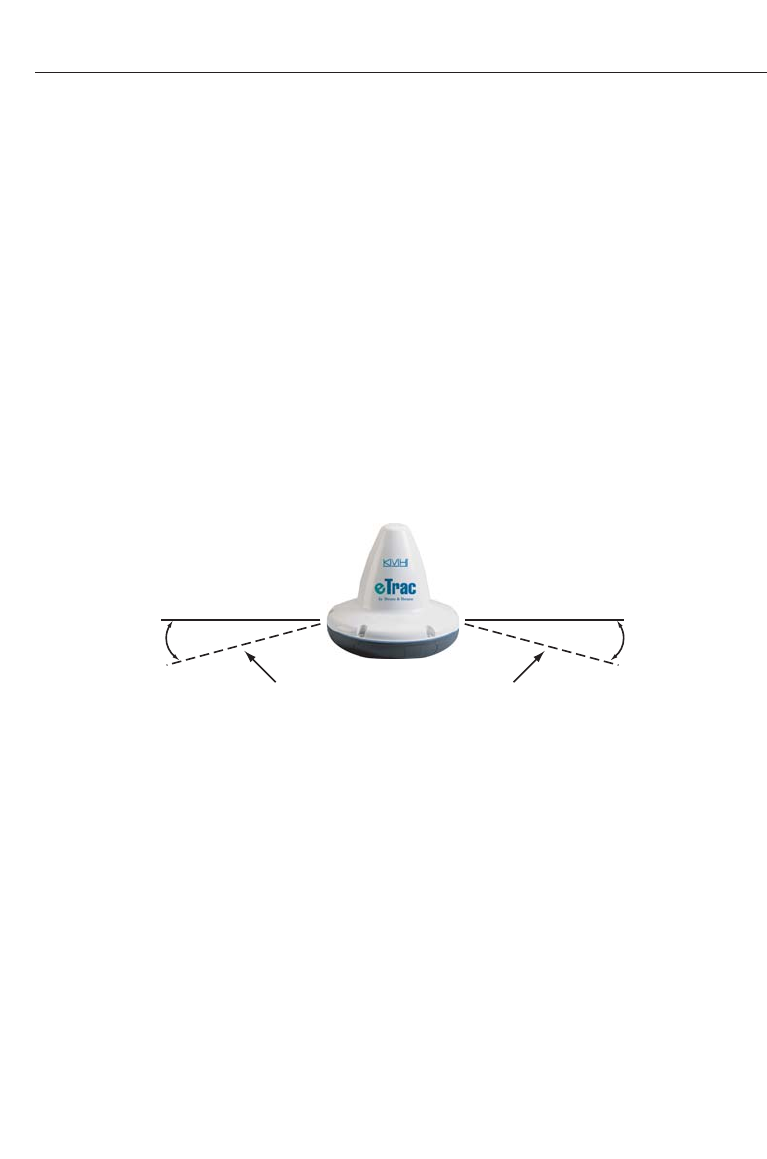
When installing the eTrac Antenna Unit, find a location that is as free from
obstructions as possible. Also maintain a certain distance to other antennas, GPS
receivers, other Inmarsat equipment, and especially radar installations. Normally the
best place for the antenna would be above radar-scanning antennas. The following
safe distances should be maintained:
• Distance to HF antennas > 16 ft (5 m)
• Distance to VHF antennas > 13 ft (4 m)
• Distance to other Inmarsat-C antennas > 8 ft (2.5 m)
• Distance to magnetic compass > 1 ft (0.3 m)
The antenna is designed to provide satellite coverage even when the vessel
experiences pitch and roll of as much as 15˚. To maintain this coverage the antenna
should be free from obstructions in the area down to 15˚ below the horizon, as
illustrated in Figure 2-1.
Figure 2-1: Optimal Viewing Angle to the Horizon
Since this may not be possible in the fore and aft directions of the vessel, the clear
area can be reduced to 5˚ below the horizon in the fore and aft directions and 15˚
below the horizon in the port and starboard directions. Any compromise in this
recommendation could degrade performance.
If an obstruction such as a pole or a funnel is unavoidable, the antenna must be
positioned in such a location that the obstruction will cover no more than a 2˚ arc
along the horizon. To calculate the minimum distance, use the following formula:
• Safe distance = 29 x Diameter of obstruction
A GuidetotheKVHeTracSatelliteCommunicationsSystem
2-2 www.kvh.com
Zenith
Horizon Horizon
15˚ 15˚
Obstructions should be below these lines


















